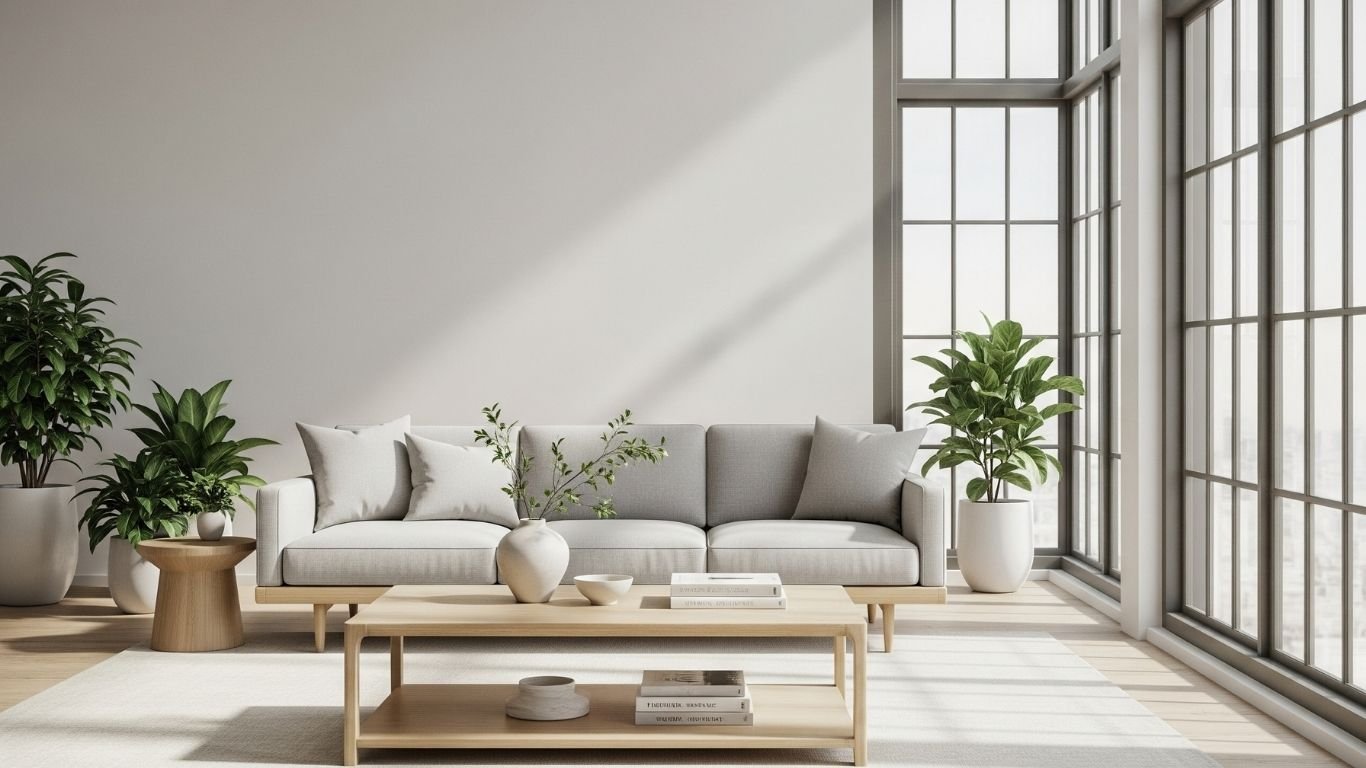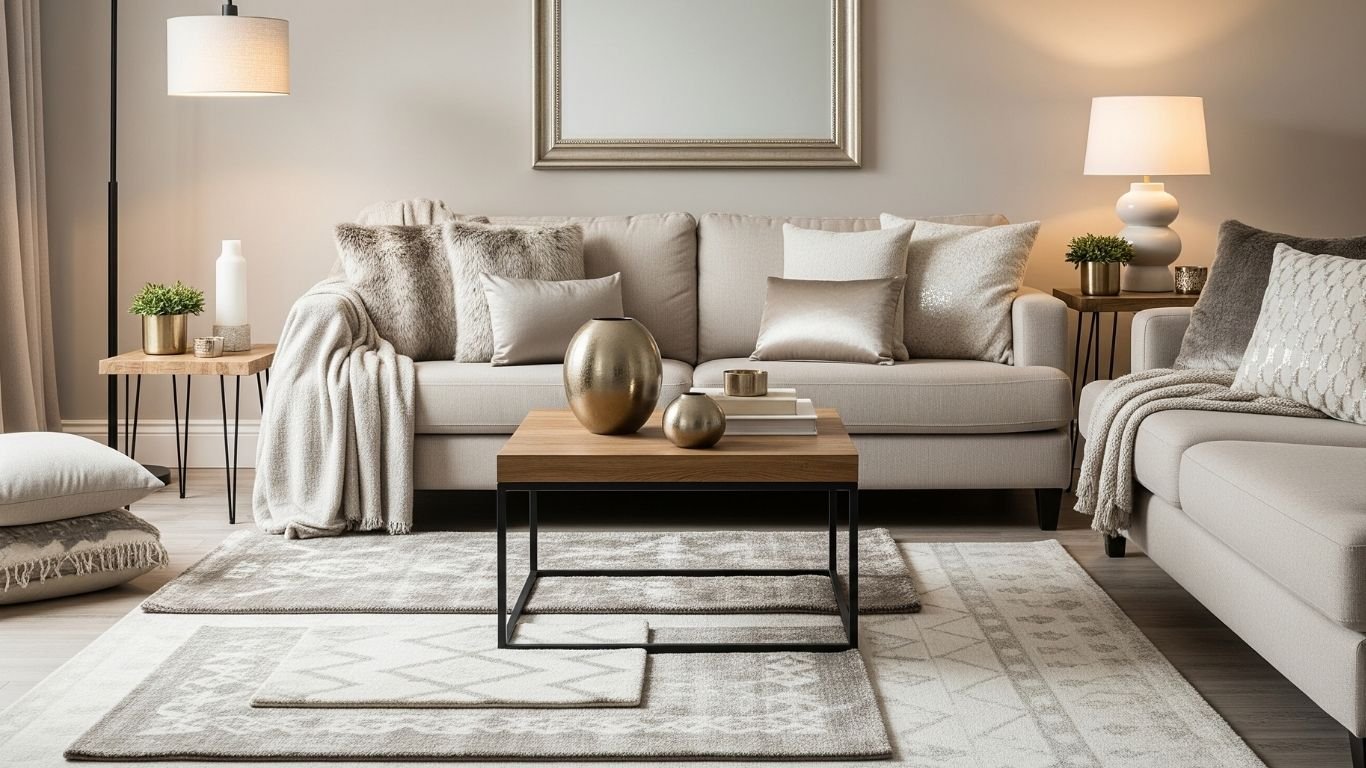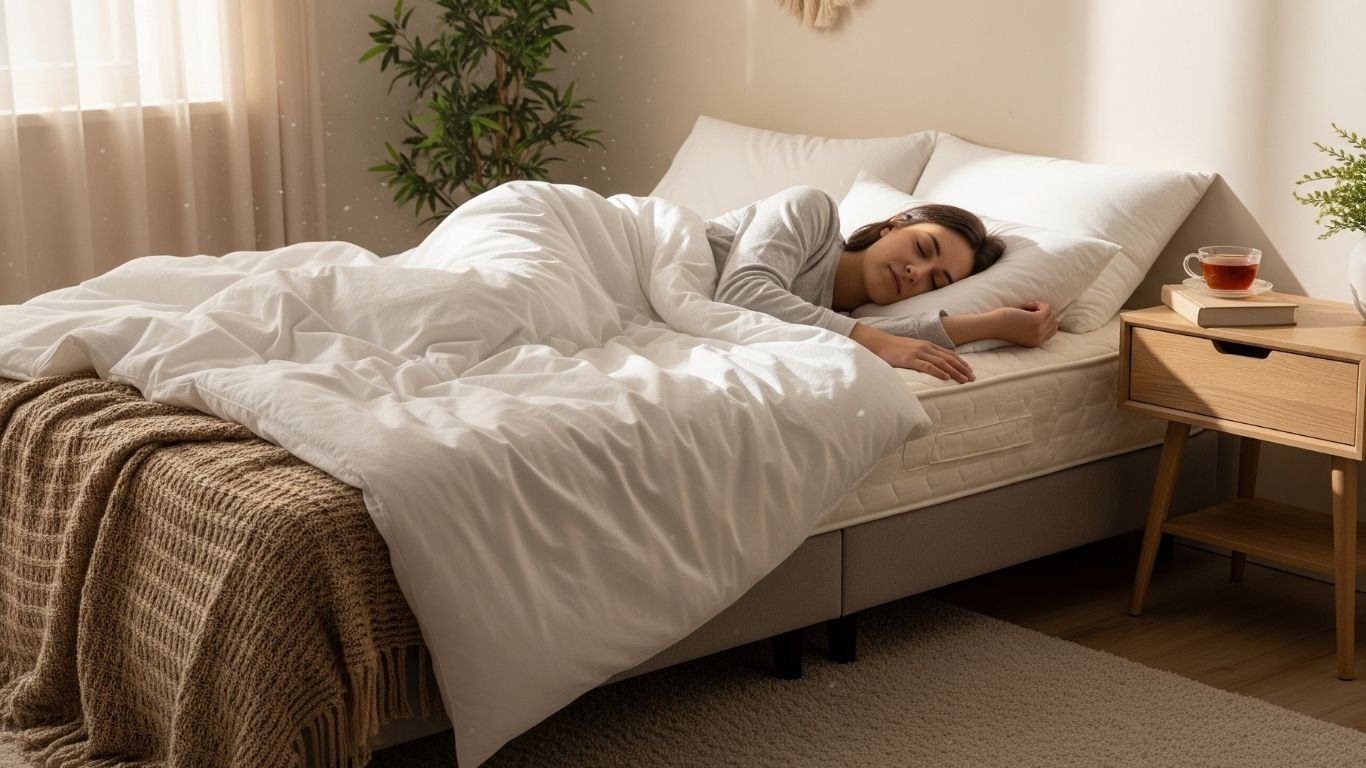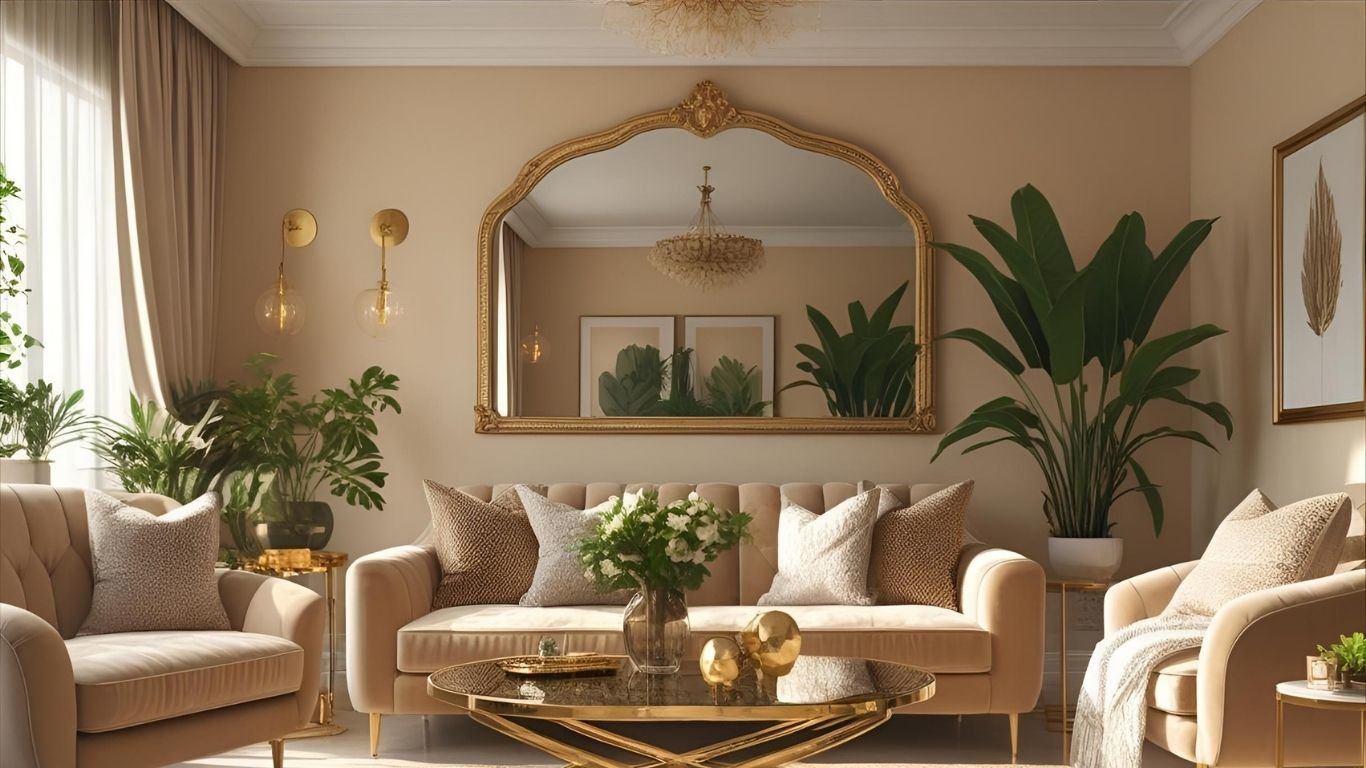Inlite Blog
- Furniture
- Trending

May 15, 2025
by Chinmay2123
Wallpaper vs. Paint: Which is Better for Your Walls?
Introduction: The Eternal Debate of Wallpaper vs Paint
When it comes to giving your walls a fresh look, homeowners typically face the classic dilemma: wallpaper vs paint. Both options have their unique advantages and potential drawbacks, making the decision more complex than it might initially seem. Whether you’re renovating your entire home or simply updating a single room, understanding the key differences between these wall covering options is essential for achieving your desired outcome.
Cost Comparison: Wallpaper vs Paint Economics

Paint: The Budget-Friendly Option
Paint generally offers a more economical entry point for wall decoration. With options ranging from ₹800 to ₹3,500 per liter for good quality paints, a DIY painting project can be relatively affordable. A standard room typically requires 4-6 liters, making the material cost approximately ₹3,200-₹21,000, depending on the paint quality and brand.
Pros:
- Lower upfront material costs
- Accessible for DIY projects
- Less expensive to change when you want a new look
Cons:
- May require reapplication every 3-5 years
- Multiple coats often needed for optimal coverage
- Professional painting services can increase costs significantly
Wallpaper: The Long-Term Investment
Wallpaper presents a higher initial investment, with prices ranging from ₹2,000 to ₹15,000+ per roll in India. A medium-sized room might require 6-10 rolls, resulting in material costs between ₹12,000 and ₹1,50,000 or more for premium designer wallpapers.
Pros:
- Longer lifespan (up to 15 years for quality wallpaper)
- Potentially better long-term value despite higher upfront costs
- Less frequent replacement needed
Cons:
- Significantly higher initial expense
- Professional installation often recommended, adding to costs
- Removal can be labor-intensive and costly
Installation Comparison: Ease and Effort
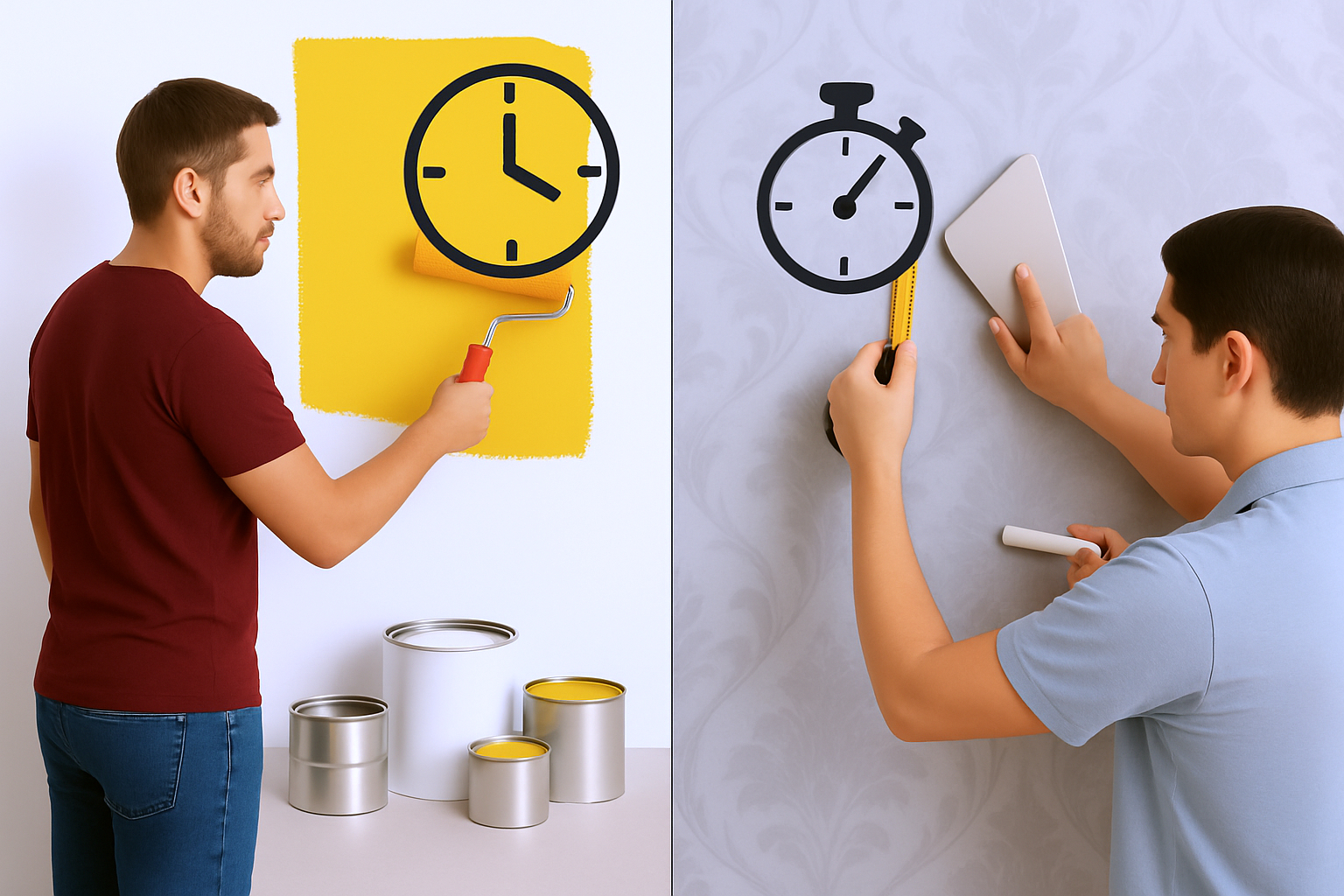
Paint Application
Difficulty Level: Beginner to Intermediate Time Investment: 1-2 days for an average room (including drying time)
Painting walls is generally straightforward, involving preparation (cleaning, taping, priming), application of 1-2 coats, and cleanup. Most homeowners can handle this project without professional assistance, making it an accessible DIY option.
Wallpaper Installation
Difficulty Level: Intermediate to Advanced Time Investment: 1-3 days for an average room
Wallpaper installation demands more precision and technical skill. The process includes wall preparation, measuring and cutting paper, applying adhesive, aligning patterns, and smoothing bubbles. While enthusiastic DIYers can tackle this project, many homeowners prefer hiring professionals to ensure flawless application.
Durability and Maintenance: Long-Term Considerations
Paint Durability
Paint typically lasts 3-7 years before showing noticeable wear, depending on the quality, finish, and room conditions. High-traffic areas may require touch-ups or repainting more frequently.
Maintenance Requirements:
- Regular dusting or gentle cleaning with mild soap solution
- Touch-ups for scuffs and scratches as needed
- Relatively simple to repair damaged areas
Wallpaper Longevity
Quality wallpaper can maintain its appearance for 10-15 years or more. Modern vinyl and non-woven wallpapers offer enhanced durability and resistance to damage.
Maintenance Requirements:
- Occasional dusting or gentle cleaning according to manufacturer instructions
- More challenging to repair when damaged
- Some modern wallpapers are scrubbable and highly durable
Design Versatility: Aesthetic Considerations in the Wallpaper vs Paint Decision

Paint Design Options
Paint offers flexibility and can be easily changed, making it ideal for those who enjoy refreshing their space frequently.
Design Possibilities:
- Unlimited color options with custom mixing
- Various finishes: matte, eggshell, satin, semi-gloss, high-gloss
- Techniques like color blocking, ombré, or sponging for texture
- Easy to update when design preferences change
Wallpaper Design Impact
Wallpaper provides instant pattern, texture, and visual interest that’s difficult to achieve with paint alone.
Design Advantages:
- Thousands of patterns, textures, and finishes available
- Statement-making accent walls with minimal effort
- Ability to add dimension and tactile elements to a space
- Options for specific aesthetics: grasscloth for natural texture, metallic papers for glamour
Environmental Impact: Eco-Friendly Considerations
Paint Environmental Factors
Modern paints have improved significantly in terms of environmental impact, but concerns remain:
- Low-VOC and zero-VOC options available for better indoor air quality
- Water-based formulations reduce environmental harm
- Proper disposal of leftover paint remains important
Wallpaper Environmental Considerations
The environmental impact of wallpaper varies widely based on materials and manufacturing processes:
- PVC-free and FSC-certified papers offer eco-friendly alternatives
- Longer lifespan means less frequent replacement and waste
- Some specialty wallpapers use sustainable materials like grasscloth or recycled content
Room-Specific Recommendations: Where Wallpaper vs Paint Performs Best
Best Rooms for Paint
Living Areas and Bedrooms: Paint’s versatility and ease of change make it ideal for spaces where you might want to update colors frequently.
Ceilings: Paint remains the practical choice for most ceiling applications.
Children’s Rooms: The ability to easily touch up or completely change colors accommodates growing children’s preferences.
Best Rooms for Wallpaper
Entryways and Hallways: Wallpaper’s durability stands up well to high traffic, while creating a striking first impression.
Dining Rooms: These less frequently used spaces benefit from wallpaper’s decorative impact without facing excessive wear.
Powder Rooms: Small spaces are perfect for statement wallpaper that might be overwhelming in larger areas.
People Also Ask About Wallpaper vs Paint
1. Is wallpaper cheaper than painting in the long run?
While paint has a lower initial cost, quality wallpaper’s longer lifespan (10-15 years vs. paint’s 3-7 years) can make it more economical over time, especially in spaces that would require frequent repainting.
2. Can you put wallpaper over painted walls?
Yes, wallpaper can be applied over painted walls, provided the surface is smooth, clean, and properly primed. Matte or eggshell finishes work best as primers for wallpaper application.
3. Which is better for hiding wall imperfections: wallpaper or paint?
Textured wallpapers are generally superior for concealing wall imperfections. While high-build primers and textured paints can help mask minor flaws, wallpaper with patterns or physical texture is more effective at disguising uneven surfaces.
4. How long does wallpaper last compared to paint?
Quality wallpaper typically lasts 10-15+ years, while paint generally requires refreshing every 3-7 years, depending on the room usage, quality of materials, and environmental factors.
Conclusion: Making Your Choice in the Wallpaper vs Paint Decision
The wallpaper vs paint debate ultimately comes down to your specific priorities:
Choose Paint If:
- You’re working with a limited budget
- You enjoy changing your décor frequently
- You prefer a DIY-friendly project
- You’re dealing with challenging wall conditions
Choose Wallpaper If:
- You want maximum visual impact and design options
- You’re seeking long-term durability
- You need to conceal wall imperfections
- You’re willing to invest more upfront for a distinctive look
Many homeowners find that combining both options—using paint as a base throughout the home and incorporating wallpaper as accents or in specific rooms—provides the perfect balance of practicality and design impact.
Whichever option you choose, quality materials and proper installation are key to achieving results that will enhance your living environment for years to come.
Explore premium wallpaper at Inlite Furnishing – where style meets durability! Visit us today to find your perfect wall makeover.
Share on facebook
Share on pinterest
Share on linkedin
Share on telegram
Related Posts
September 4, 2025
How Can Minimalist Furniture Transform Your Space?
August 21, 2025
Which Mattress Gives You the Best Night’s Sleep?
Categories
- Blog (40)
- curtains (6)
- Decoration (3)
- Fabric (10)
- Furniture (4)
- Interior Design (15)
- Uncategorized (1)
Recent posts
- How Can Minimalist Furniture Transform Your Space? September 4, 2025
- What Are the Best Budget Home Decor Ideas That Look Luxurious? August 28, 2025
- Which Mattress Gives You the Best Night’s Sleep? August 21, 2025
- Luxury Furnishing Tips: How to Make Your Home Look Expensive on a Budget August 14, 2025
- A Complete Guide to Choosing the Right Sofa Fabric for Your Lifestyle August 7, 2025
Archive
Follow us
